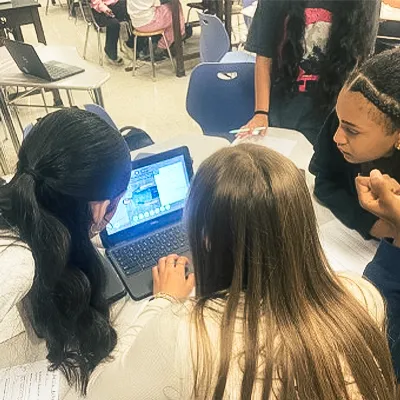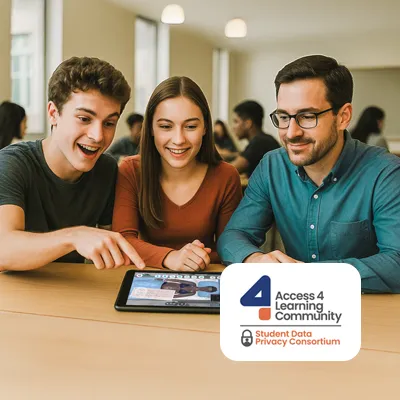Virtual Patients as a Tool for Supporting Neurodivergent Students
What is neurodiversity?
Neurodiversity is a concept that recognizes the variety of ways in which our brains can develop and function. It acknowledges that some people’s brains work differently, giving them unique strengths and challenges compared to those whose brains develop in more typical ways. While some neurodivergent individuals may have diagnosed medical conditions, neurodiversity also encompasses those who do not have an identified medical diagnosis.
These differences can include conditions like ADHD, dyslexia, dyspraxia, and other learning disabilities. When teaching neurodivergent students, it’s crucial to create an inclusive learning environment that recognizes and supports their diverse needs.
Challenges with Traditional Teaching Methods
Traditional teaching methods may not effectively support neurodivergent students because they often face challenges such as:
Focus: Many neurodivergent students find it difficult to maintain focus on tasks for extended periods, particularly if the subject matter doesn’t interest or engage them.
Environments: Neurodivergent individuals may interact with their surroundings in unique ways, which can impact their ability to concentrate and perform in traditional settings.
Collaboration: These students may also find it harder to collaborate with others, facing difficulties that their neurotypical peers might not encounter.
Traditional education often lacks the flexibility to accommodate the diverse learning paces and styles of all students. Each student learns at their own pace, and conventional textbook-based lectures may not be adaptable enough to meet these varied needs.
Incorporating technology in the classroom has proven to be effective in accommodating diverse learning needs and enhancing the overall educational experience. A study exploring the use of gamification in Biomedical Science education found that such teaching and learning resources effectively engage neurodivergent students.
How Virtual Patients Support Diverse Learning Needs
Engaging ADHD Students
Students with ADHD often find it challenging to stay focused during passive learning activities. Virtual patient scenarios provide an interactive and dynamic learning environment that requires active decision-making and problem-solving. This engagement helps maintain their attention and keeps them involved in the learning process.
The real-time feedback system reinforces their learning by providing immediate corrections and guidance, making the educational experience more effective and rewarding.
Supporting Dyslexic Students
Traditional classroom settings can be fast-paced, which may not align with the learning speed of students with dyslexia. Virtual patient platforms, like Body Interact, allow students to learn at their own pace. This self-paced approach enables dyslexic students to take the time they need to process information without the pressure of keeping up with others.
They can also revisit and repeat scenarios as often as needed, which helps solidify their understanding and build confidence in their abilities.
Enhancing Communication Skills for Autistic Students
For students on the autism spectrum, social interactions and communication can be particularly challenging, especially in high-pressure environments. Virtual patient simulations offer a safe space for these students to practice and refine their communication strategies.
The role-playing aspect of these simulations allows them to engage in patient-provider interactions without the anxiety associated with real-world scenarios. This repeated practice helps them build essential social and communication skills in a controlled, supportive environment
Catering to Kinesthetic Students
Some students learn best through hands-on experiences and multisensory engagement. Virtual patient platforms cater to kinesthetic students by incorporating interactive elements, such as clicking and dragging to perform procedures or make clinical decisions. This tactile approach aligns with their learning style, making the content more accessible and helping to reinforce their learning through active participation.
By accommodating these diverse learning needs, virtual patient platforms offer a versatile and inclusive approach to medical education, ensuring that all students, regardless of their neurological differences, have the opportunity to succeed.
References
1- Vivian Genaro Motti. 2019. Designing emerging technologies for and with neurodiverse users. In Proceedings of the 37th ACM International Conference on the Design of Communication (SIGDOC ’19). Association for Computing Machinery, New York, NY, USA, Article 11, 1–10.
https://doi.org/10.1145/3328020.3353946
2- Hutson, J., Hutson, P. (2024). Gamification. In: Inclusive Smart Museums. Palgrave Macmillan, Cham.
https://doi.org/10.1007/978-3-031-43615-4_4
3- May JE, Anderson E, Clark D and Hull J (2023) Gamification in Biomedical Science Education: The Successful Implementation of Resimion, a Scenario-Based Learning Tool. Br J Biomed Sci 80:11756. doi: 10.3389/bjbs.2023.11756









